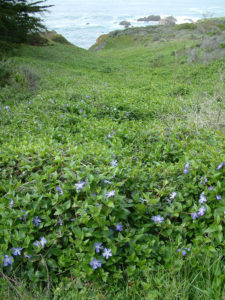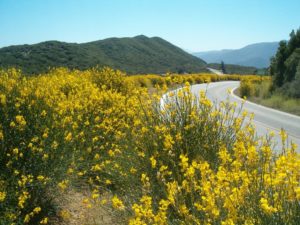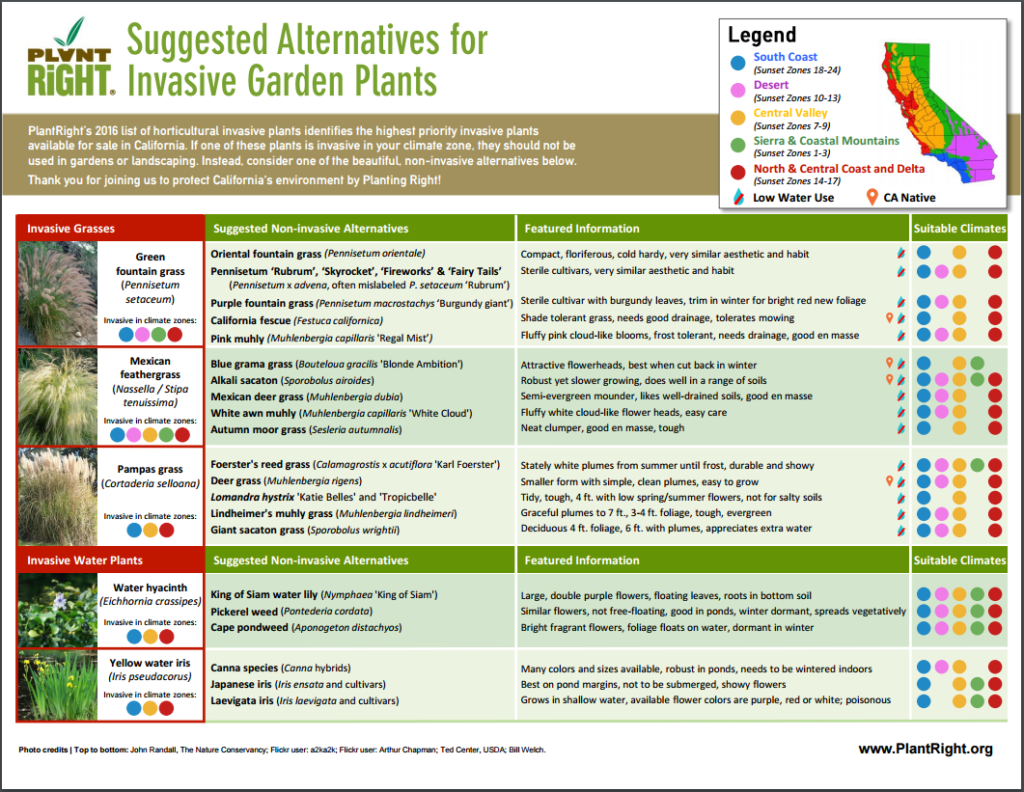Avoiding Invasive Plants
Invasive plants are introduced species that out-compete native plants and animals and once established, can degrade habitats, limit the available water supply, and increase the likelihood of fire and flood. Most non-native plants are safe to use, but sometimes while trying to make our gardens beautiful, we can unintentionally end up using an invasive plant.
Thankfully these days you can know before you grow.
Why do invasive plants matter?
Tackling the problem of invasive plants is necessary to protect California’s wild landscapes, and it requires making smart plant choices in our own gardens. California is a patchwork of unique habitats, so a plant that is considered invasive in one part of the state like California’s Central Coast may be no problem at all in another area like the Sierra Nevada or the desert.
Invasive plants are different from garden weeds in that they don’t rely on human activities (tilling, irrigation, etc.) to survive, but like weeds, they can spread by wind, in soil or gravel, or by birds and other wildlife. In addition to being a garden bully, these plants can escape from your property and spread into wildlands. Even if you live in an urban area, invasive species can hitchhike to a wildland miles away and become a nuisance. Also, continuing to buy invasive plants encourages the growing and selling of those plants.
By spreading on their own, invasive plants cause measurable harm to the environment and human health. Here are a few examples of how invasive plants cause harm:
- outcompeting existing flora in a way that displaces native plants and animals
- exacerbating wildfire and flooding risk
- clogging waterways that limit commercial port traffic and trade
- costing taxpayers hundreds of millions in avoidable expense
- compromising agricultural yields and real estate value
PlantRight is a nonprofit organization that identifies the highest priority invasive garden plants currently for sale in California. Consult their invasive plant list to find out which plants are invasive in your region and learn about beautiful, hardy non-invasive alternatives.
Keeping your property free of invasive plants will make it easier to maintain a healthier, more balanced environment in your garden and community!
To avoid introducing an invasive plant on your property: 
- Shop for Non-invasives: When shopping for plants at your local nursery or garden center, let staff know that you would like plants that are not invasive species in your region.
- Check Plants Before Buying: Before buying or adopting a plant, check PlantRight.org’s regional map to see if the plant is listed as a problem in your area.
- Look for Alternatives: If a plant you like is listed as an invasive plant, check out Plantright.Org’s suggested alternatives for invasive garden plants. You’ll find lists of non-invasive plants with similar qualities that are suitable for your climate.
- Control Invasives Early: If you know invasive plants exist in nearby gardens or open spaces, watch for the plant to appear in your garden and remove it as soon as you spot it. They are much easier to control before they have a chance to get established.
- Eliminate Bare Soil: Open soil is an invitation to invasive species to take root. Spread mulch over any open ground that isn’t planted to make it harder for invasive plant seeds that blow in or get dropped by birds to get established.


